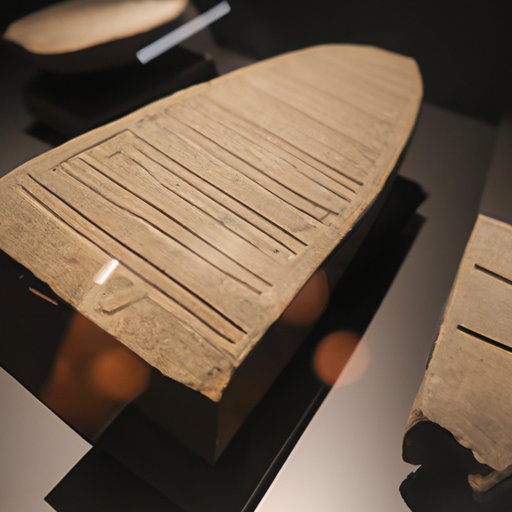Introduction
The writing system in Mesopotamia is one of the earliest forms of writing that has been discovered. It dates back to around 3000 BC and was a major advancement in communication and record-keeping. The system was used by many cultures in the region and was a crucial factor in the development of civilization. Understanding the writing system of Mesopotamia is important for piecing together the history of the region and uncovering the secrets of the past.

Exploring the Ancient Writing System of Mesopotamia
The invention of cuneiform writing is one of the most significant achievements of the ancient Mesopotamians. Cuneiform is a type of writing that uses wedge-shaped symbols to represent words and concepts. This writing system was developed over time and eventually became the standard form of writing in Mesopotamia.
The writing system used in Mesopotamia was very complex and diverse. It included a variety of different symbols, which could be used to represent both words and concepts. This allowed for a rich and detailed form of writing that could capture the nuances of the language. The writing system was also used to keep detailed records of events and transactions, providing historians with valuable information about the region’s past.
The writing system in Mesopotamia had a long and rich history. It was used for centuries by different cultures in the region and underwent various changes and developments over time. It was adopted by the Babylonians, Assyrians, and Persians, who all added their own unique elements to the writing system.
How Did the Writing System Develop in Mesopotamia?
The early writing systems in Mesopotamia were relatively simple and used primarily for keeping records of transactions. Over time, the writing system became more advanced and was used for a wider range of purposes. This included writing laws and regulations, keeping accounts, and recording history.
The advancement of writing had a profound impact on Mesopotamian society. It allowed for the codification of laws and the spread of knowledge. It also provided a means of communication between people in different parts of the region. This facilitated trade and commerce, leading to a more prosperous and sophisticated society.
Understanding the Impact of Writing on Ancient Mesopotamian Society
The writing system in Mesopotamia had a significant cultural significance. It allowed for the preservation of stories, legends, and myths. It also enabled people to share ideas and beliefs across great distances. This played an important role in the formation of culture and identity in the region.
The writing system in Mesopotamia was also an important tool for trade and commerce. Merchants used the writing system to keep track of transactions and payments. This allowed for the efficient exchange of goods and services and helped to facilitate economic growth in the region.
Finally, the writing system was used as a tool for political control. Rulers used it to issue orders and laws, as well as to keep records of their subjects. This allowed them to maintain order and stability within their kingdom.

Unraveling the Mysteries of Cuneiform Writing in Mesopotamia
The deciphering of cuneiform writing in Mesopotamia has been a difficult but rewarding task. Scholars have worked hard to unlock the secrets of the ancient writing system. Through careful study, they have been able to make sense of the symbols and use them to gain insight into the lives of the people who used them.
In recent years, there have been a number of discoveries of cuneiform tablets. These tablets contain information about various aspects of life in Mesopotamia, including legal documents, business transactions, and religious texts. They provide invaluable insight into the culture and history of the region.
Conclusion
The writing system in Mesopotamia was an important advancement in communication and record-keeping. It allowed for the codification of laws, the spread of knowledge, and the efficient exchange of goods and services. It also had a significant cultural significance, with stories, legends, and myths being preserved through the written word. Understanding the writing system of Mesopotamia is essential for gaining insight into the region’s past and unlocking the secrets of the ancient world.
(Note: Is this article not meeting your expectations? Do you have knowledge or insights to share? Unlock new opportunities and expand your reach by joining our authors team. Click Registration to join us and share your expertise with our readers.)
